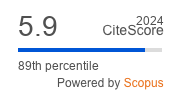Article | Open Access
Public Institutions Meet TikTok: Communication Strategies and the Rise of Govtainment
| Views: | 900 | | | Downloads: | 1694 |
Abstract: This study explores how the communication strategies of public institutions have been redefined by digital platforms, with a particular focus on TikTok. Specifically, it examines the extent to which elements of “govtainment”—the “spectacularisation” of government communication through digital media—are present in the communication strategies of public institutions. We analysed how the communication strategies of two Romanian ministries on TikTok are shaped by the platform’s specific characteristics, the impact of these adaptations on their audiences, and what elements of “govtainment” can be identified within their content. We employed a mixed-method approach, combining quantitative and qualitative content analysis of TikTok publications by Romania’s Ministry of Defence and Ministry of Internal Affairs—the only two ministries with a consistent presence on the platform. The findings indicate that both ministries adapt their communication strategies to align with TikTok’s features, incorporating elements that enhance virality, such as tone, viral trends and sounds, content formats, speech acts, and humanisation. Our analysis confirms the presence of govtainment elements in the communication strategies employed by these ministries. However, when correlating spectacularisation elements such as trend participation, tone, and speech acts with audience engagement, we found that their presence does not necessarily result in the highest engagement rates. Nevertheless, the overall figures suggest that both institutions have managed to gain significant engagement on their TikTok accounts.
Keywords: communication strategies; government communication; govtainment; public communication; spectacularisation; TikTok
Published:
© Camelia Cușnir. This is an open access article distributed under the terms of the Creative Commons Attribution 4.0 license (http://creativecommons.org/licenses/by/4.0), which permits any use, distribution, and reproduction of the work without further permission provided the original author(s) and source are credited.


